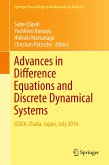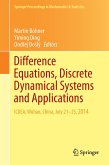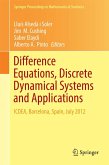This book provides an introduction to the analysis of discrete dynamical systems. The content is presented by an unitary approach that blends the perspective of mathematical modeling together with the ones of several discipline as Mathematical Analysis, Linear Algebra, Numerical Analysis, Systems Theory and Probability. After a preliminary discussion of several models, the main tools for the study of linear and non-linear scalar dynamical systems are presented, paying particular attention to the stability analysis. Linear difference equations are studied in detail and an elementary introduction of Z and Discrete Fourier Transform is presented. A whole chapter is devoted to the study of bifurcations and chaotic dynamics. One-step vector-valued dynamical systems are the subject of three chapters, where the reader can find the applications to positive systems, Markov chains, networks and search engines. The book is addressed mainly to students in Mathematics, Engineering, Physics, Chemistry, Biology and Economics. The exposition is self-contained: some appendices present prerequisites, algorithms and suggestions for computer simulations. The analysis of several examples is enriched by the proposition of many related exercises of increasing difficulty; in the last chapter the detailed solution is given for most of them.
From the book reviews:
"The text, intended for undergraduate students, is translated from its Italian third edition ... . The book is made of seven chapters, plus one devoted to solutions to proposed exercises, and eight complements. ... All chapters include a number of exercises (184 in total)." (Giuseppe Gaeta, zbMATH, Vol. 1301, 2015)
"The text, intended for undergraduate students, is translated from its Italian third edition ... . The book is made of seven chapters, plus one devoted to solutions to proposed exercises, and eight complements. ... All chapters include a number of exercises (184 in total)." (Giuseppe Gaeta, zbMATH, Vol. 1301, 2015)









